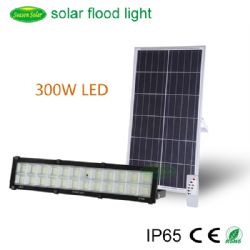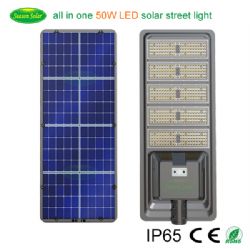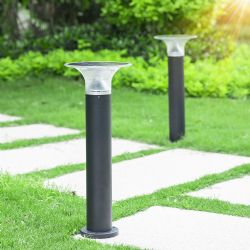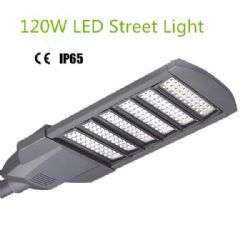Luminous intensity
Luminous intensity
In photometry, luminous intensity is a measure of the wavelength-weighted power emitted by a light source in a particular direction per unit solid angle, based on the luminosity function, a standardized model of the sensitivity of the human eye. The SI unit of luminous intensity is the candela (cd), an SI base unit.Photometry deals with the measurement of visible light as perceived by human eyes. The human eye can only see light in the visible spectrum and has different sensitivities to light of different wavelengths within the spectrum. When adapted for bright conditions (photopic vision), the eye is most sensitive to greenish-yellow light at 555 nm. Light with the same radiant intensity at other wavelengths has a lower luminous intensity. The curve which measures the response of the human eye to light is a defined standard, known as the luminosity function. This curve, denoted V(λ) or {\displaystyle \textstyle {\overline {y}}(\lambda )} \textstyle {\overline {y}}(\lambda ), is based on an average of widely differing experimental data from scientists using different measurement techniques. For instance, the measured responses of the eye to violet light varied by a factor of ten.
Like other SI base units, the candela has an operational definition—it is defined by the description of a physical process that will produce one candela of luminous intensity. By definition, if one constructs a light source that emits monochromatic green light with a frequency of 540 THz, and that has a radiant intensity of 1/683 watts per steradian in a given direction, that light source will emit one candela in the specified direction.
The frequency of light used in the definition corresponds to a wavelength of 555 nm, which is near the peak of the eye's response to light. If the source emitted uniformly in all directions, the total radiant flux would be about 18.40 mW, since there are 4π steradians in a sphere. A typical candle produces very roughly one candela of luminous intensity.
Prior to the definition of the candela, a variety of units for luminous intensity were used in various countries. These were typically based on the brightness of the flame from a "standard candle" of defined composition, or the brightness of an incandescent filament of specific design. One of the best-known of these standards was the English standard: candlepower. One candlepower was the light produced by a pure spermaceti candle weighing one sixth of a pound and burning at a rate of 120 grains per hour. Germany, Austria, and Scandinavia used the Hefnerkerze, a unit based on the output of a Hefner lamp. In 1881, Jules Violle proposed the Violle as a unit of luminous intensity, and it was notable as the first unit of light intensity that did not depend on the properties of a particular lamp. All of these units were superseded by the definition of the candela.
Featured Products
-
New wall-mounted style 300W solar flood light/lamp with led light for billboard lighting
USDInquiry
-
New high power all in one style 50W outdoor solar street light/lamp with led light
USDInquiry
-
New Style high efficiency and bright LED Solar Garden Light/Lamp
USDInquiry
-
Top Quality 120W Outdoor LED Street Light
USDInquiry
Contact us
Tel: 0086-13564181085
E-mail: info@seasonsolarlight.com
Add: Unit 1307, Beverley Commercial Centre, 87-105 Chatham Road South, Tsim Sha Tsui, Kowloon, Hongkong
E-mail: info@seasonsolarlight.com
Add: Unit 1307, Beverley Commercial Centre, 87-105 Chatham Road South, Tsim Sha Tsui, Kowloon, Hongkong
Copyright © 2016-2025 Seasonsolar All Rights Reserved.



